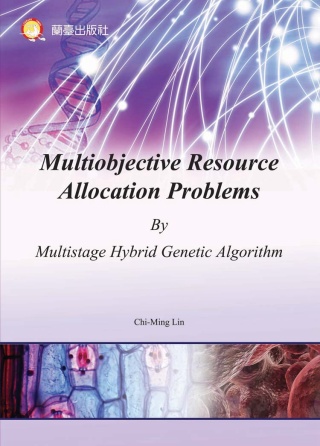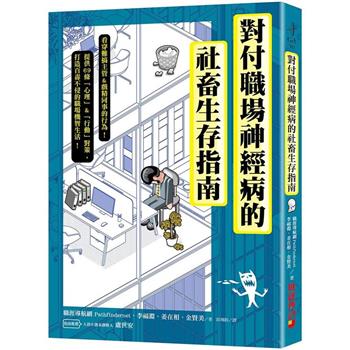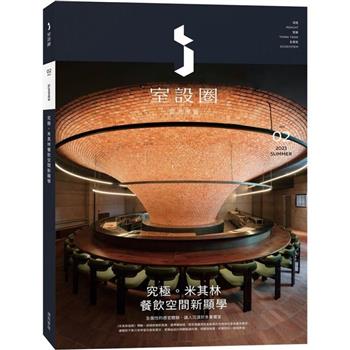Acknowledgements3
Absract of Chinese 4
Abstract8
Chapter 1 Introduction2
1.1 Background of the Study2
1.2 Related Work7
1.2.1 Genetic Algorithm7
1.2.2 Multiobjective Genetic Algorithm36
1.3 Resource Management Problems54
1.4 Problems in this Dissertation58
1.4.1 A Solution Method for Human RMP Optimization58
1.4.2 A Solution Method for Asset RMP Optimization58
1.4.3 A Solution Method for Capital RMP Optimization58
1.4.4 A Solution Method for Staff Training RMP Optimization59
1.5 Organization of the Dissertation59
Chapter 2 Multistage Genetic Algorithm in Resource Management System65
2.1 Introduction65
2.2 Basic Idea67
2.2.1 Basic Idea Description67
2.2.2 Structure of Resource Management Solution System71
2.2.3 Multistage Network Framework74
2.2.4 Linearization76
2.2.5 Local Search78
2.3 Mathematical Formulations78
2.4 Constructing Multistage Network Structure81
2.4.1 Example One82
2.4.2 Example Two84
2.5 Solving Method by Multistage Genetic Algorithm90
2.5.1 Example Three93
2.5.2 Example Four99
2.6 Experimental Results102
2.6.1 Facility Allocation Problem102
2.6.2 Problem Description of Multiobjective Human RMP104
2.6.3 Experimental Results of Multiobjective Human RMP105
2.7 Summary110
Chapter 3 Optimization for Multiobjective Assets RMP by Multistage GA112
3.1 Introduction112
3.2 Problem Description113
3.2.1 There is Assets Resources Now113
3.2.2 The Data in the Past113
3.2.3 The Problem of Enterprise Boss Expects to be Solved114
3.3 Mathematical Model of Multiobjective Assets RMP115
3.4 Experimental Results and Discussion in First Part122
3.4.1 Experiments Results in the First Part122
3.4.2 Discussion in First Part125
3.5 Experimental Results and Discussion in Second Part134
3.5.1 Experimental Results in Second Part134
3.5.2 Discussion in Second Part139
3.6 Summary144
Chapter 4 Multistage GA for Optimization of Multiobjective Capital RMP149
4.1 Introduction149
4.2 Mathematical Model of Multiobjective Capital RMP153
4.3 Solution Approaches for Multiobjective Capital RMP155
4.3.1 Candidate Mutual Funds Selection155
4.3.2 Multistage Hybrid GA of Multiobjective Capital RMP156
4.3.3 Pareto Optimal Solution159
4.3.4 Adaptive Weight GA161
4.4 Numerical Example of Multiobjective Capital RMP164
4.4.1 Problem Description164
4.4.2 The Goal of the Problem Reached in Research166
4.4.3 Numerical Example of Multiobjective Capital RMP167
4.5 Discussion of Multiobjective Capital RMP175
4.6 Summary178
Chapter 5 Optimization of Staff Training RMP by Multistage GA182
5.1 Introduction182
5.2 Concepts of Competence Set183
5.3 Mathematical Model187
5.4 Solution Approaches by Multistage Hybrid GA191
5.4.1 Genetic Representation191
5.4.2 Evaluation193
5.4.3Selection193
5.5 Numerical Examples195
5.5.1 Problem Description195
5.5.2 The Goal of the Problem Reached in Research196
5.6 Summary209
Chapter 6 Conclusions and Future Research 213
6.1 Conclusions213
6.2 Future Research219
Glossary220
Notations220
Abbreviations222
Bibliography223
List of Publications231
International Journal Papers231
International Conference Papers with Review232
Index235
List of Figure
Figure 1.1: The Flow Chart of Genetic Algorithm11
Figure 1.2: Procedure-code of Basic GA12
Figure 1.3: Coding Space and Solution Space17
Figure 1.4: Feasibility and Legality18
Figure 1.5: The Mapping from Chromosomes to Solutions21
Figure 1.6: An Example of One-cut Point Crossover Operation24
Figure 1.7: Procedure-code of One-cut Point Crossover Operation25
Figure 1.8: An Example of Mutation Operation by Random27
Figure 1.9: An Example of Mutation Operation by Random27
Figure 1.10: Procedure-code of Multiobjective GA54
Figure 2.1: Proposed Structure of Resource Management Solution System72
Figure 2.2: Proposed a Flowchart of Resource Management Solution System73
Figure 2.3: An Example of Complex Multistage Network Framework74
Figure 2.4: Representation of Multistage Network Approach for RMP75
Figure 2.5: Representation Process for RMP83
Figure 2.6: Representation Process for RMP84
Figure 2.7: A Multistage Network of Human RMP90
Figure 2.8: The Code of Random Key-based Encoding in Procedure 194
Figure 2.9: The Code of Weight Generating in Procedure 295
Figure 2.10: An Example of Weight Generating96
Figure 2.11: An Example of One-cut Point Crossover Operator96
Figure 2.12: The Example of Insertion Mutation98
Figure 2.13: Proposed Structure of a Chromosome100
Figure 2.14: An Example of Optimal Allocation Path101
Figure 2.15: Proposed Chromosome Structure for Four Stages Allocation Path101
Figure 2.16: The Pareto Optimal Solutions of Weighted-sum Method107
Figure 2.17: The Pareto Optimal Solutions of Proposed Method108
Figure 3.1: An Example of Complex Multistage Network Framework114
Figure 3.2: The Path Process of Two Objectives in Each Node119
Figure 3.3: Simulation Results for Multiobjective Assets RMP121
Figure 3.4: The Simulation Results of pri-GA124
Figure 3.5: The Simulation Results of msh-GA124
Figure 3.6: Preference Solutions with Pareto Optimal Solutions by pri-GA137
Figure 3.7: Preference Solutions with Pareto Optimal Solutions by msh-GA137
Figure 4.1: Simple Case with Two Objectives160
Figure 4.2: The Procedure of Pareto GA161
Figure 4.3: Adaptive Weights and Adaptive Hyperplane163
Figure 4.4: The Process Path of Two Objectives in Each Node168
Figure 4.5: An Example for Multiobjective Capital RMP169
Figure 4.6: Experiment Results by Two Methods172
Figure 5.1: The Cost Function of CSE184
Figure 5.2: CSE in Multistage Network Model186
Figure 5.3: An Example of State Permutation Encoding for CSE Operation.192
Figure 5.4: An Example of State Permutation Decoding for CSE Operation.192
Figure 5.5: An Example of Evaluation for CSE193
Figure 5.6: An Example of Selection for CSE193
Figure 5.7: The Procedure of msh-GA for Multistage CSE194
Figure 5.8: An Example of CSE for Staff Training RMP198
Figure 5.9: The Process Path of Two Objectives in Each Arc199
Figure 5.10: A Solution Example of Pareto Optimal Solutions for CSE200
Figure 5.11: Simulation Results of CSE for Staff Training RMP205
List of Table
Table 2.1: Transportation Costs102
Table 2.2: Maintenance Costs of Each Facility102
Table 2.3: The Parameters Setting of Experiment102
Table 2.4: Transportation Amounts from Each Facility to Each Consumer103
Table 2.5: Total Cost of Facility Allocate Transportation by Two Methods103
Table 2.6: An Example of Expected Wage of Programmer (Workers)106
Table 2.7: An Example of Expected Product Number of Task (Job)106
Table 2.8: The Parameter Settings of Experiment106
Table 2.9: Experiment Results of Two Methods108
Table 2.10: Experiment Results of Overall Average by Two Methods109
Table 3.1: The Data of the Company in the Past 4 Years117
Table 3.2: An Example of Expected Cost in 4 Districts 118
Table 3.3: An Example of Expected Selling Goods in 4 Districts118
Table 3.4: The Total Number of Feasible Solutions for Process Planning120
Table 3.5: The Parameter Settings of Experiment122
Table 3.6: Experiment Rs of the Pareto Optimal Solutions123
Table 3.7: Experiment Result of Two Methods125
Table 3.8: Same Preference Solution for Minimum Cost127
Table 3.9: Same Preference Solution for Maximum Selling Goods Number129
Table 3.10: Preference for Golden Mean within Pareto Optimal Solutions131
Table 3.11: The Parameter Settings of msh-GA136
Table 3.12: Experiment Results for Pareto Optimal Solutions138
Table 3.13: Preference for Golden Mean within Pareto Optimal Solutions141
Table 4.1: 3-months and 12-months Return Rates for 60 Sample Companies165
Table 4.2: Reordering Data Sets of Mutual Funds165
Table 4.3: The Total Number of Feasible Solutions for Process Planning169
Table 4.4: The Covariance Matrix170
Table 4.5: The Parameters Setting of Experiment170
Table 4.6: Experiment Results of Pareto Optimal Solutions by Two Methods171
Table 4.7: Experiment Results for the Optimal Portfolio174
Table 4.8: The Optimal Portfolio Solution of Sharpe Ratio174
Table 5.1: Total Numbers of Feasible Solutions for CSE200
Table 5.2: An Example of Data for CSE203
Table 5.3: Parameters Settings204
Table 5.4: Pareto Optimal Solutions for Multiobjective CSE204
Table 5.5: Experiment Results of the Pareto Optimal Solutions207
Table 5.6: Experiment Results of Pareto Optimal Solutions208

 看圖書介紹
看圖書介紹









